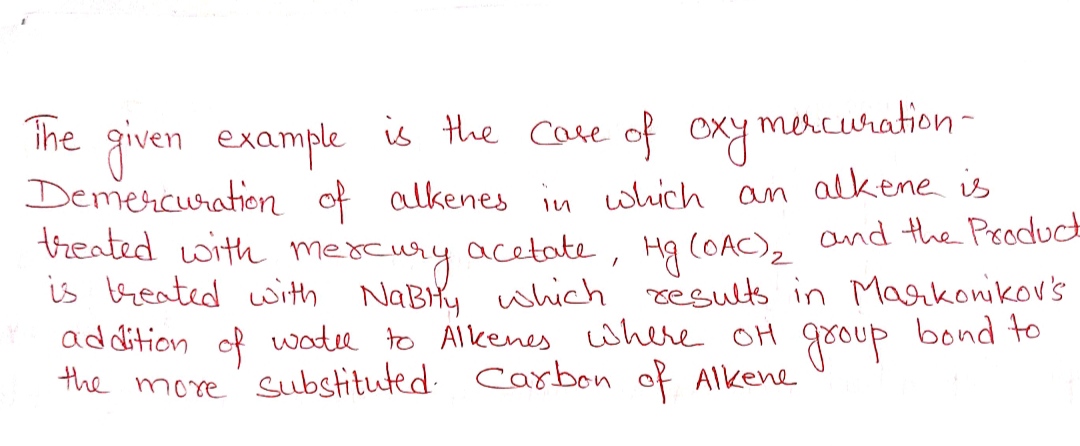Draw the structure of the major organic product of the following reaction. CH3 CH3CHC=CH₂ CH₂CH3 progress 1. Hg(OAc)2, H₂O 2. NaBH4 • You do not have to consider stereochemistry. • In cases where there is more than one answer, just draw one. ? ChemDoodle
Reactive Intermediates
In chemistry, reactive intermediates are termed as short-lived, highly reactive atoms with high energy. They rapidly transform into stable particles during a chemical reaction. In specific cases, by means of matrix isolation and at low-temperature reactive intermediates can be isolated.
Hydride Shift
A hydride shift is a rearrangement of a hydrogen atom in a carbocation that occurs to make the molecule more stable. In organic chemistry, rearrangement of the carbocation is very easily seen. This rearrangement can be because of the movement of a carbocation to attain stability in the compound. Such structural reorganization movement is called a shift within molecules. After the shifting of carbocation over the different carbon then they form structural isomers of the previous existing molecule.
Vinylic Carbocation
A carbocation where the positive charge is on the alkene carbon is known as the vinyl carbocation or vinyl cation. The empirical formula for vinyl cation is C2H3+. In the vinyl carbocation, the positive charge is on the carbon atom with the double bond therefore it is sp hybridized. It is known to be a part of various reactions, for example, electrophilic addition of alkynes and solvolysis as well. It plays the role of a reactive intermediate in these reactions.
Cycloheptatrienyl Cation
It is an aromatic carbocation having a general formula, [C7 H7]+. It is also known as the aromatic tropylium ion. Its name is derived from the molecule tropine, which is a seven membered carbon atom ring. Cycloheptatriene or tropylidene was first synthesized from tropine.
Stability of Vinyl Carbocation
Carbocations are positively charged carbon atoms. It is also known as a carbonium ion.
![**Draw the structure of the major organic product of the following reaction:**
**Given Reaction:**
\[ \text{CH}_3\text{CHC(=CH}_2)\text{CH}_2\text{CH}_3 \xrightarrow{\text{1. Hg(OAc)}_2, \text{H}_2\text{O}} \xrightarrow{\text{2. NaBH}_4} \]
**Notes:**
- You do not have to consider stereochemistry.
- In cases where there is more than one answer, just draw one.
**Diagram/Tool Panel Explanation:**
Below the instructions is an interactive drawing tool (ChemDoodle) for constructing chemical structures. The panel contains various icons and drawing tools such as:
- Atom selectors for carbon, oxygen, and other elements.
- Tools for drawing single, double, and triple bonds.
- Options for creating rings and other structural features.
- Editing tools like erasers and undo/redo buttons.
- The option to clear the canvas and start over.
Using this tool, you can draw the expected product based on the given reaction conditions.
**Reaction Explanation:**
- The given reaction involves the oxymercuration-demercuration process.
- The alkene in the starting material will react with mercury(II) acetate in the presence of water to form a mercurinium ion intermediate.
- This intermediate is opened by water to add an -OH group to the more substituted carbon, following Markovnikov's rule.
- Finally, sodium borohydride (NaBH₄) is used to remove the mercury group, resulting in the formation of an alcohol.](/v2/_next/image?url=https%3A%2F%2Fcontent.bartleby.com%2Fqna-images%2Fquestion%2Fd72a3123-7c63-4e48-96b9-2d394375b3c8%2Fe5ca484c-b117-401b-b28d-26874d08f2ec%2F9r3huj_processed.jpeg&w=3840&q=75)

Step by step
Solved in 3 steps with 3 images









